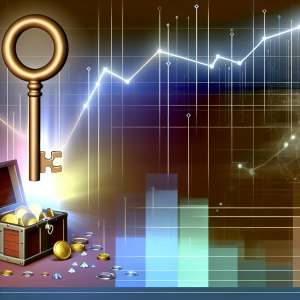The Federal Reserve’s recent decision to hold interest rates steady has sent ripples through the financial world, and savvy investors need to understand what this means beyond the headlines. While President Trump’s calls for rate cuts and criticism of Fed Chair Jerome Powell have made the news, the real story lies in the nuanced economic signals and what this means for your wallet—and your portfolio.
Why the Fed Is Holding Steady—and Why It Matters
The Fed’s choice to keep the federal funds rate unchanged reflects deep uncertainty around inflation and economic growth. Greg McBride, Bankrate’s chief financial analyst, aptly describes the current environment as one where “another shoe is about to drop,” largely due to unresolved tariff tensions and their unpredictable impact on inflation. This cautious stance means borrowing costs remain elevated, and consumers and businesses alike face higher interest expenses.
From an investment perspective, this signals a period of volatility and opportunity. High borrowing costs may dampen consumer spending and business expansion, potentially slowing growth. But for income-focused investors, the silver lining is that savings yields remain attractive, offering inflation-beating returns in a market starved for yield.
The Real-World Impact: Five Key Areas
- Credit Cards: The Pain of High Rates
Credit card rates are hovering just above 20%, near historic highs. With no rate cuts expected until at least September, consumers should look beyond simply hoping for lower rates. Experts recommend consolidating high-interest credit card debt with personal loans or zero-interest balance transfer cards. For example, a recent TransUnion report highlights that many consumers are still paying 22% or more, which can cripple financial flexibility.
Actionable Insight: Advisors should proactively counsel clients on debt management strategies, emphasizing refinancing or balance transfers to reduce interest burdens before rates potentially rise further.
- Auto Loans: Affordability Crisis
Auto loan rates are near record highs—7.3% for new cars and 11% for used vehicles, per Edmunds. Coupled with rising car prices, partly due to tariffs, this is creating a perfect storm of affordability challenges. Notably, Bank of America data reveals that 20% of car buyers now pay over $1,000 monthly, a staggering figure that signals financial strain.
What Investors Should Watch: Auto manufacturers and lenders may see shifts in demand, creating investment risks and opportunities. Investors might consider companies innovating in electric vehicles or alternative financing models that could ease affordability pressures.
- Mortgages: Stuck in a High-Rate Rut
Mortgage rates are tethered more to Treasury yields than the Fed directly, but they remain stubbornly high—around 6.9% for a 30-year fixed mortgage. This stagnation limits homebuyer activity and could cool the housing market, a key economic driver.
Forecast: Unless inflation fears and tariff uncertainties ease, mortgage rates will likely stay elevated through the summer. Homebuyers should lock in rates quickly if they find favorable terms, while investors in real estate should prepare for a slower market.
- Student Loans: Stability Amid Turbulence
Federal student loan rates are fixed annually and currently sit around 6.5%, shielding borrowers from immediate Fed moves. However, with fewer forgiveness options and rising living costs, student debt remains a significant financial burden.
Investor Angle: Companies offering student loan refinancing or alternative education financing might see growing demand. Watch for policy changes that could reshape this market segment.
- Savings: A Bright Spot for Retirees
Despite no direct control over deposit rates, the Fed’s policies keep yields on CDs and high-yield savings accounts well above inflation—over 4%, according to Bankrate. This is a rare win for savers, especially retirees relying on fixed incomes.
Strategic Move: Investors should shop aggressively for top-yielding savings vehicles and consider laddering CDs to maximize returns while maintaining liquidity.
What’s Next?
The Federal Reserve’s cautious approach signals a balancing act between taming inflation and not stifling growth. For investors and advisors, this means:
- Diversify Income Sources: With borrowing costs high and economic uncertainty lingering, relying solely on growth stocks or fixed income is risky. Consider dividend-paying stocks, real estate investment trusts (REITs), and inflation-protected securities.
- Prepare for Volatility: Tariffs and geopolitical risks remain wildcards. Maintain a flexible portfolio that can adapt to sudden market shifts.
- Focus on Debt Management: High interest rates make debt more expensive. Prioritize reducing high-cost liabilities to improve financial resilience.
Unique Insight: Recent data from the Federal Reserve Bank of New York shows that consumer debt delinquencies are rising, especially in auto loans and credit cards. This trend could foreshadow broader economic stress, making it imperative for investors to monitor credit markets closely and consider defensive positioning.
In summary, the Fed’s hold on interest rates is not just a pause—it’s a signal that the economic landscape remains complex and fraught with risk. Investors who understand the interplay between monetary policy, inflation, and consumer behavior will be best positioned to navigate the months ahead. At Extreme Investor Network, we believe staying informed and proactive is your strongest asset in this evolving financial climate.
Source: What that means for your money

